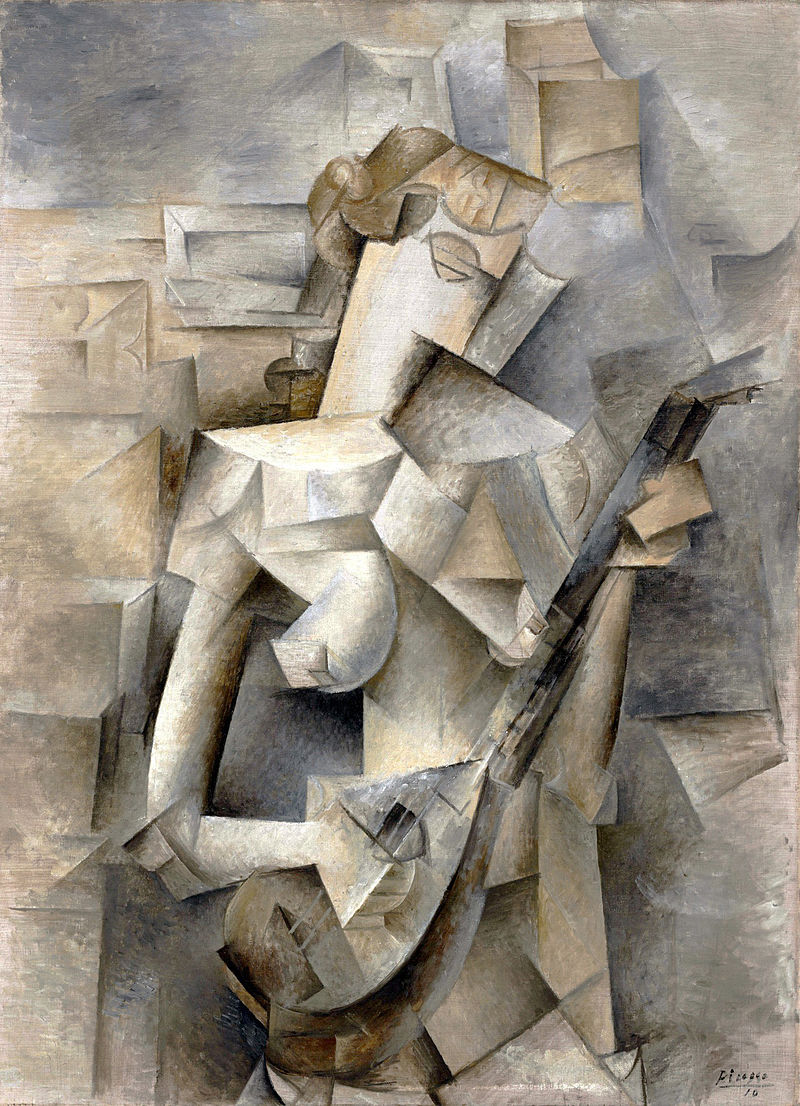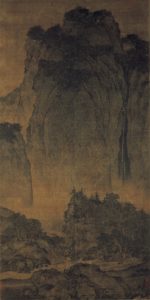作爲一名畫家,可能大家最熟知的是我的油畫。但在我走上油畫的道路之前, 我花了相當多的時間在中國水墨畫上。多年來, 我在東西方藝術體系方面的經驗使我有一些有趣的觀察, 其中之一是中國山水畫和畢卡索立體主義原理上的相似之處。
The East and West are two distinct art systems. How then are Song-Yuan Dynasty landscapes related to Picasso and Cubism? Though they seem completely different at first, unusual associations emerge when we subject both to careful study and appreciation.
東方藝術與西方藝術是兩大體系,宋元山水怎麼會與畢加索、立體主義扯在一起呢?他們是風馬牛不相及的東西,但當我們細心地去研究和品味時,會發現兩者之間有著奇妙的相關之處。
The principle of Western Cubism is to take the external features of the subject as perceived from different angles then piece or assemble them together to create an artwork different from the actual subject. Picasso believed that artistic works can only be considered “creative” if they are different to what appears in nature. Almost all modern schools of art embrace this principle. An extension of this principle has produced a wide variety of new styles and artworks.
西方立體主義的原理是將從不同角度看到的物象的一部分,主要是具外型特徵的那部份,拼接、組合在一起,變成一件與真實物象不同的藝術品,畢加索認為藝術家筆下的作品要與自然界的物象不一樣,這才叫“創造”。幾乎所有現代藝術的各種流派都以這個理論作為原則的。以這個原理向外伸延而產生形形色色的新風格、新作品。
In China, great masters such as Li Sixun (李思訓) of the Early Tang Dynasty, Jing Hao (荊浩) and Guan Tong (關仝) of the Five Dynasties, Dong Yuan (董源) and Juran (巨然) of the Southern Tang Dynasty, Li Cheng (李成), Fan Kuan (范寬), Ma Yuan (馬遠) and Xia Gui (夏圭) of the Northern/Southern Song Dynasties as well as Huang Gongwan (黃公望) and Wang Meng continued to explore the boundaries of landscaping over time. The path of “learning from nature, exploration and creation” they found eventually grew into the Chinese landscape painting system. The brushes of the masters not only captured the majestic mountain ranges, high mountains and rushing rivers, unusual peaks and deep valleys of the north but also the winding rivers, green forests and misty sights of the south (Jiangnan). They may all differ in their outlines, shading techniques and brushwork but the same principles in composition and layout are followed throughout the entire Chinese landscape painting system. In other words, each scene is not limited to just one perspective. The landscape is a combination of observations made from the level distance, high distance and deep distance. It is not merely a copy of the scenery as seen through the camera lens either. Instead, the painting consists of real-world scenery that has been recreated within the mind of the painter. Such an approach has many similarities with the techniques of Cubism used by Picasso. Generations of artists have embraced this principle of not being bound by the actual scenery. Master Shi Tao (石濤) perfectly summarized this approach when he said “the painting of all unusual peaks serves as a rough draft.”
而中國的山水畫從盛唐的李思訓到五代的荊浩、關仝,南唐的董源、巨然,兩宋的李成、范寬、馬遠、夏圭,直到元代的黃公望、王蒙等等傑出大師不斷探索下,摸索到了一條“師法造化、搜妙創真”的道路,並形成了一個博大深厚的中國山水畫體系。在這些大師筆下有崇巒峻嶺、高山流水、奇峰深谷的北國風光,也有遠岫江渚、翠林掩映、煙雨空濛的江南景色。他們有各自不同的勾勒、渲染技巧與筆墨特徵,但就取景構圖、結構畫面的原則而言,中國山水畫的體系都是一樣的。就是說,在一個畫面中,不是以單獨的一個視點的焦點透視取景,而是以平遠、高遠、深遠等各種角度觀察山水所得而集於畫面,也絕對不是照相機鏡頭下風景的翻版,是真山真水在畫師心中重組後的創造物。與畢加索的立體主義方法頗有相似之處。這種不拘泥於此山此水和一草一木的作畫原理成為歷代畫家的準則,石濤大師所說“搜盡奇峰打草稿”就是這種方法的傳神寫照。在一千多年前中國的藝術家就懂得用這種“立體主義”方式來描繪山水風物,書寫胸中逸氣。
Whenever I visit the National Palace Museum in Taipei and stand in front of the painting Travelers Among Mountains and Streams by Fan Kuan, I am always moved by how the majestic mountains that rise from the ground, the waterfall plummets from up high, as well as the ancient woods and buildings. I could almost hear the mountain spring and the travelers’ chatter! The landscape painters of China created landscape paintings inspired by nature that becomes something more. The result is a unique sense of interest and aesthetic value in Chinese landscape paintings.
每當我在台北故宮博物院范寬的【谿山行旅圖】面前時,對著那壯氣奪人、拔地而起的山峰,飛流直下的瀑布,森然的古樹和樓宇,彷彿隱聞山泉、行旅的喧囂,無一次不震撼我的心靈!中國山水畫家們創造了一種既有真情實景,又更高於生活的風景畫,形成了中國山水畫自成體系的審美趣味和美學價值。
Something interesting emerges when we compare Song-Yuan Dynasty landscapes and the works of Picasso side by side. We see that neither present the actual subject of direct observation. Instead, a creative treatment has been applied. Their impact on the audience is completely different though: Most people don’t understand Picasso’s paintings. They may understand the principles of Cubism but may find it challenging to relate to it. Chinese landscapes produce a different response – we continue to believe what we see is real and can imagine ourselves “living, traveling and playing” within the painting. There is nothing jarring or discomfiting about the collage. Maybe this goes back to the philosophical difference between the West and the East – individuality and harmony. This difference between Eastern and Western arts is quite thought-provoking.
當我們將宋元山水與畢加索的作品放一起做比較那就很有趣了。不錯,他們呈現的都不是直接觀察下的真實之物,都做了創造性的處理,但在觀眾的眼中卻有截然不同的效果:畢加索的畫為大多數人所不解,即使瞭解他的立體主義作畫原理也還是難以引起共鳴。中國山水畫則不同,我們仍然相信畫面的真實感,而且可享受到“可居、可行、可遊”的意境。絲毫沒有拼湊起來的生硬感覺和不愉快。這大概是東西方藝術的不同之妙處。




What a fascinating idea. Lots for me to study here.